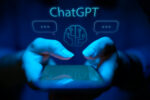
[ad_1]
MOUNTAIN VIEW, California — Tynker, the leading game-based coding platform that has engaged over 100 million kids, proudly introduces “Tynker Copilot.” Leveraging the capabilities of Large Language Models (LLMs), Tynker Copilot empowers young innovators aged 6-12. It provides a seamless interface for these budding developers to transform their ideas into visual block code for apps and games. Additionally, when exploring existing projects, kids benefit from the tool’s ability to explain block code fragments, ensuring a deeper understanding. Tynker Copilot allows children to build confidence as they work with AI, laying a solid foundation for their future. With this launch, coding education takes a significant leap forward.
Large Language Models (LLMs) have excelled in text-based programming languages like Python and JavaScript. However, their application to visual block coding, the primary introduction to programming for many kids, had yet to be explored. Tynker is the first to bridge this gap. Our latest integration lets children quickly convert their ideas into block code, streamlining their initial coding experience.
Create your Free Account to Continue Reading
eSchool News is Free for qualified educators. Sign up or login
to access all our K-12 news and resources.
Please confirm your email address
More News from eSchool News
Want to share a great resource? Let us know at [email protected].
[ad_2]
Source link









